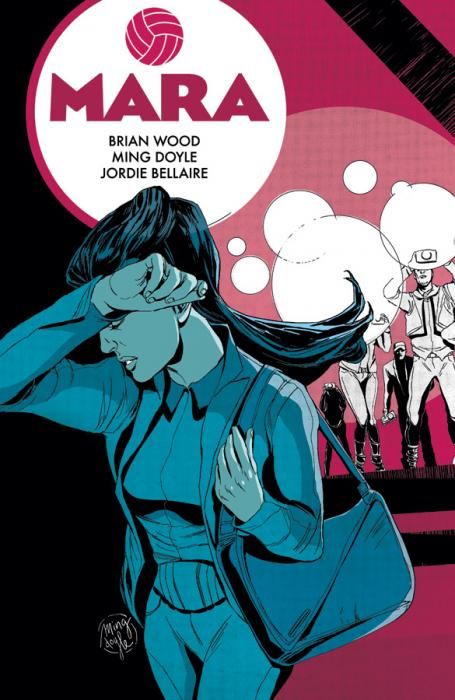Brian Wood and Ming Doyle return to the world of high-stakes Women's Volleyball in "Mara" #2, and if you enjoyed the events of the opening issue, prepare to have your jaw hit the ground by the twist at the end of the second. "Mara's" premise centers around what would happen if the world's best sportsperson was revealed, very publically, to have super-abilities. What pressures would she face? Could her career survive? Would she even admit it to herself?
Not quite a satire, "Mara" seems to be an extended metaphor for the exploitation of people with talent, and what might happen if one of those people becomes too good to compete -- or, indeed, control. As well as being a heavy character study of the eponymous heroine, it also focuses a lot on the media empire that surrounds her. Readers are pointedly told about the technology that was trained on her power-manifestation, and shown the boot camps designed to turn amateurs into professionals, almost regardless of the personal cost to them. Unlike most satires, it doesn't invite laughter, but like the best, it does invite a comparison of this strange reality with our own world.
If "Mara" has a problem, it's that its premise is simply taken to such extreme lengths that the wrong things threaten to encompass your thoughts while reading it. A world where the USA is split by civil war seems like a feasible extrapolation of reality. A world in which the entire planet is consumed with fervour for one sport, and that sport is women's volleyball seems to sit in some kind of alternate universe uncanny valley. It's too real to easily suspend all disbelief, but it's too unbelievable to truly inhabit.
Perhaps that's the point. Perhaps Wood is trying to make readers think long and hard about why anyone cares about the sports they arbitrarily enjoy over any other; about the fact that there are industries surrounding these sports that exist to exploit people as much as enable fans to enjoy them. Perhaps it's not that deep at all, and Doyle just wanted to draw volleyball matches. Presumably, readers will have a better idea once the series is over, but it's still hard to read an issue the first time without being distracted by its subject matter, and that's an undeniable weakness.
Still, on every other level it's technically sublime. Ming Doyle and Jordie Bellaire's pencils and coloring combine to convey the powerful isolation Mara feels, and every panel shows how closed-off she's become. Wood, meanwhile, delivers an intense look at Mara, but doesn't forget to make the world around her well-realised and consistent. The third-person omniscient narration means there are only glimpses of what's happening inside Mara's head, so readers are left to ask the same questions as those around her: did she know what she was doing, how long has she been doing it, and what is she, if not human?
Answers to those questions are surely forthcoming, and in the meantime readers are left to wonder what the series is really about. It's clearly an ambitious comic with something to say, and its creators have the chops to realize those ambitions and deliver that message. All that remains is to pay attention while the creators tell their story, and after two issues, I'm as interested as ever in how it's all going to play out.

